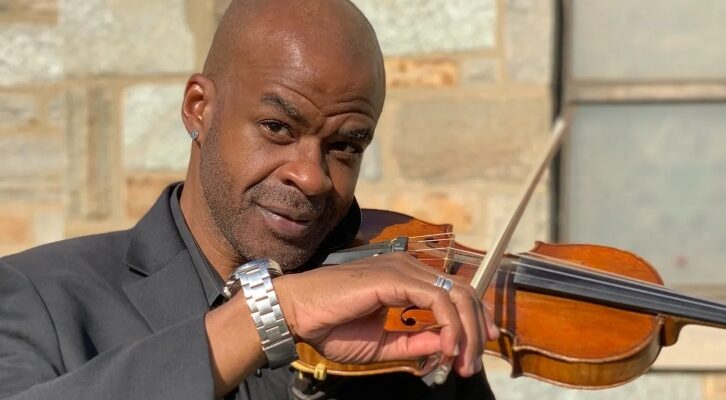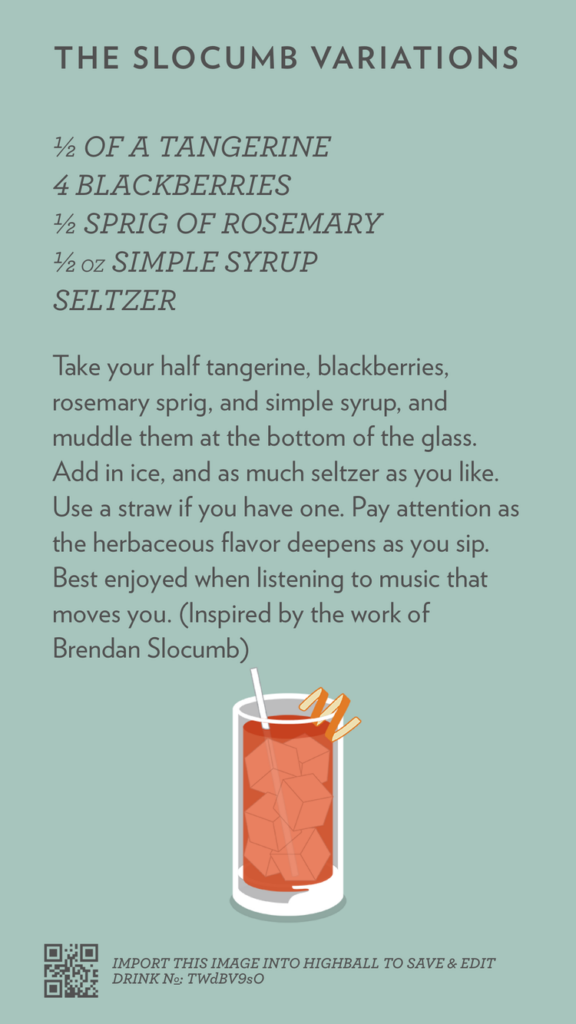
Brendan Slocumb on Diving Into the World of Musicology for His New Historical Musical Thriller
In Conversation with Christopher Hermelin on So Many Damn Books
Brendan Slocumb has a seat in the hyperspace universe of the Zoom Damn Library to talk his new historical musical thriller Symphony of Secrets, and of course some Violin Conspiracy, getting into creating a world of historical music, how his violin discipline helps him as a writer, and more. Plus, he gets to talk up his debut panel friend Eli Cranor’s Ozark Dogs, and how the literary world has welcomed him.
Subscribe and download the episode, wherever you get your podcasts!
*
From the episode:
Christopher: In Symphony of Secrets, I felt like that there was a sort of ode to archives, an ode to research. Bern’s project where he’s transcribing Red, is that a real world sort of project? Can you talk about this archive world of music that part of Symphony of Secrets is based in?
Brendan: Yes. Bern being a musicologist first, when when I decided to make him a musicologist, I was really concerned because I don’t know a great deal about musicology. And actually, when I was touring for the Violin Conspiracy, I met a musicologist and she was like, “I’m so excited that your next book is about a musicologist. You have no idea.” And I am like, “Oh my gosh, I got to make sure that this is right. I have to be accurate with this.”
So, I mean, I did research. I did a lot of research on what musicologists do, and their field is so vast they can cover so many different areas of music. And with Bern’s opportunity to authenticate the score. Yeah. It’s when I checked with my friend Kate, who is a musicologist, she’s like, Yeah, you nailed it. This is exactly what we do. Well, thank you. Okay. All right. Disaster avoided.
Christopher: So it really exists. There are people that are, like, trying to piece together these old pieces, archaeologically.
Brendan: Right. Like, there could be a piece of music that was “discovered.” And one musicologist would say, “I think this is a piece written by Haydn.” And so you would find a musicologist or an expert who specializes in Haydn. They would, you know, analyze the the pen strokes. They would analyze the composition itself, you know, the paper that it was written on, just everything, every aspect of it, they would have to authenticate it before they could say, yes, absolutely. This is a piece written by Joseph Haydn.
Christopher: That was one of my absolute favorite moments in the book, actually. It’s early on when Bern is just getting his first chance to be around the manuscript for the first time. He’s just so giddily excited about it, and I was completely there with him.
Another thing that I can’t stop thinking about since I read it was the alternative musical notation that Josephine Reed uses, and it made me think about all sorts of ways that people must have had musical notation before they there was a standard, or if they don’t know how to use the standard at all. Can you talk about creating her system and what it looks like in your head?
Brendan: Absolutely. This is one of those things that’s not my area of expertise as well. So I contacted one of my violin professors. I contacted her husband, who is a genius. And he sent me pages and pages and pages of annotations that different composers would use. And it was mind blowing, I mean, I saw things that looked like mistakes, you know, just scribbles on a page, to really intricate designs, to things that looked like a fourth grade project, just anything that you could possibly imagine.
And knowing that to these composers, it makes perfect sense. It’s a true example ofone size does not fit all. Not everything can be done the same way, but it all comes out beautifully. I just thought that that was fascinating. And with Josephine, because she could hear and see so many sounds and colors and everything in everyday life, you know, a bird singing or footsteps down the sidewalk, a horn blowing, a water hose squirting, just everything. So she would need a really intricate system to manage all of these tones and sounds and everything. It was great to be able to just create an entirely different way of her composing everything. And, you know, it’s how she sees the world and it doesn’t have to make sense to anyone but her. So that was actually a lot of fun to do.
*
What’d you buy?
Brendan: Cyclops (from X-MEN) Statue
Christopher: We Are Too Many by Hannah Pittard, Terrace Story by Hilary Leichter, The Last Animal by Ramona Ausubel
*
Recommendations:
Brendan: City of Orange by David Yoon, Vivaldi’s Four Seasons, Haydn’s Symphones 99-104, Antonín Dvořák’s Symphony No. 8 & Serenade for Strings
Christopher: FantasticLand by Mike Bockoven
*

So Many Damn Books
A blessing, a curse, a podcast. est. 2014. Christopher (@cdhermelin) invites folks to the Damn Library to talk about reading, literature, publishing, and trying to make it through their never-dwindling stack of things to read. All with a themed drink in hand. Recorded at the Damn Library in Brooklyn, NY.



















